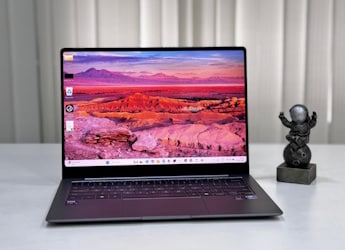- Home
- Mobiles
- Mobiles Opinion
- Flagship Smartphones Are Switching to Metal Bodies, But I Still Prefer Plastic
Flagship Smartphones Are Switching to Metal Bodies, But I Still Prefer Plastic

When Samsung launched the Samsung Galaxy S5, people complained that it looked cheap because it was made from the same polycarbonate plastic material as seen in other smartphones - not to mention the same, monotonous design spanning across all its devices. Today, many of the new flagship smartphones in the market - iPhone 6, iPhone 6 Plus, HTC One M9, Samsung Galaxy S6 and Galaxy S6 Edge - flaunt a metal body. Chinese companies soon followed suit, with phones like the Gionee Elife S5.5, Huawei Ascend P8, and Xiaomi Mi 4 also using metal. On the other hand, brands that aren't using metal, go with glass or leather as seen in Sony Xperia Z4 or the upcoming LG G4.
I'm using an old Google Nexus 5 that's made from plastic, and I hate this shift towards metal. Plastic phones hide scratches, are tough and don't shatter. They're often cheaper, usually feel great in the hand, and look good too.
As of today, large segments of handset users favour metal smartphones for their looks or premium feel. Couple of my colleagues use iPhone, and after a few months, their handsets are covered in scratches, most of which are distinctly visible on the shiny Apple logo at the back. Now they stay hidden courtesy 'plastic' phone covers, which they say is a part of "customisation".
I thought smartphones with premium metal finish are supposed to be flaunted for their looks and design, not stay under a phone cover? Plastic phones tend to hide most of the blemishes on them while on metal bodies, even the smallest of marks appear terribly clear and deep. And to top it off, the plastic on my phone might not look as good to some, but it's probably going to last longer than your metal phone.
Here's a video clip showing a drop test of last year's (metal) flagship HTC One (M8). In this video, the handset is dropped thrice on the ground (back, side and front faced) to test its durability and the resistance level. Well, the very first drop test will speak for itself.
My LG-made Google Nexus 5 sports a plastic build, and I sometimes use a cover, but only because I like the customisation, not because I need protection for my phone.
Moving on, aluminium or magnesium (metals commonly used in smartphones) are malleable. After all, most metals bend when sufficient force is applied. Remember last year's popular bendgate video featuring iPhone 6 and iPhone 6 Plus? And also Samsung's recent video showing how much pressure the new Galaxy devices can take before they break or bend? It was the glass bodied Xperia Z3 which didn't break, thanks to its rounded aluminium frame and tempered glass panels.
Smartphones with plastic build, on the other hand, stay safe from such issues. Polycarbonate material, which is used in most good quality plastic-built handsets, is known for its high impact resistance, good temperature resistance and flexibility. For instance, take a look at the LG G3 and Samsung Galaxy S5 bend test in this video. These phones can stand up to much more abuse.
The only advantage metal has is that it is good in dissipating heat as compared to plastic. However, at the end of the day, the heating-up of a handset mostly depends on the usage and how much load is being put on the SoC - high performance tasks will cause heating, but the daily usage of your phone shouldn't be a problem.
For me, the most important thing is that a phone doesn't need to be aluminium or magnesium-bodied to look good. I could talk about the design of Nexus 5, which feels great in hand and has a very unsophisticated, simple design, or even the LG G3. Take the recently introduced Lumia 640 or any of the first generation Motorola smartphones (Moto X, Moto G or Moto E). All of them are sturdy, offer a good grip in hands, and in my opinion, look more stylish than metal-bodied phones.
So far, metal smartphones are still limited in numbers to flagships. But as is always the case, the 'premium' material might trickle down to mid-range handsets soon, and to some budget offerings as well. But I hope plastic or polycarbonate handsets will never die because, for this user at least, they're the better choice.
Get your daily dose of tech news, reviews, and insights, in under 80 characters on Gadgets 360 Turbo. Connect with fellow tech lovers on our Forum. Follow us on X, Facebook, WhatsApp, Threads and Google News for instant updates. Catch all the action on our YouTube channel.
Related Stories
- Samsung Galaxy Unpacked 2025
- ChatGPT
- Redmi Note 14 Pro+
- iPhone 16
- Apple Vision Pro
- Oneplus 12
- OnePlus Nord CE 3 Lite 5G
- iPhone 13
- Xiaomi 14 Pro
- Oppo Find N3
- Tecno Spark Go (2023)
- Realme V30
- Best Phones Under 25000
- Samsung Galaxy S24 Series
- Cryptocurrency
- iQoo 12
- Samsung Galaxy S24 Ultra
- Giottus
- Samsung Galaxy Z Flip 5
- Apple 'Scary Fast'
- Housefull 5
- GoPro Hero 12 Black Review
- Invincible Season 2
- JioGlass
- HD Ready TV
- Laptop Under 50000
- Smartwatch Under 10000
- Latest Mobile Phones
- Compare Phones
- Huawei Nova 15
- Huawei Nova 15 Pro
- Huawei Nova 15 Ultra
- OnePlus 15R
- Realme Narzo 90x 5G
- Realme Narzo 90 5G
- Vivo S50 Pro Mini
- Vivo S50
- Asus ProArt P16
- MacBook Pro 14-inch (M5, 2025)
- Huawei MatePad 11.5 (2026)
- OnePlus Pad Go 2 (5G)
- OnePlus Watch Lite
- Just Corseca Skywatch Pro
- Acerpure Nitro Z Series 100-inch QLED TV
- Samsung 43 Inch LED Ultra HD (4K) Smart TV (UA43UE81AFULXL)
- Asus ROG Ally
- Nintendo Switch Lite
- Haier 1.6 Ton 5 Star Inverter Split AC (HSU19G-MZAID5BN-INV)
- Haier 1.6 Ton 5 Star Inverter Split AC (HSU19G-MZAIM5BN-INV)

















